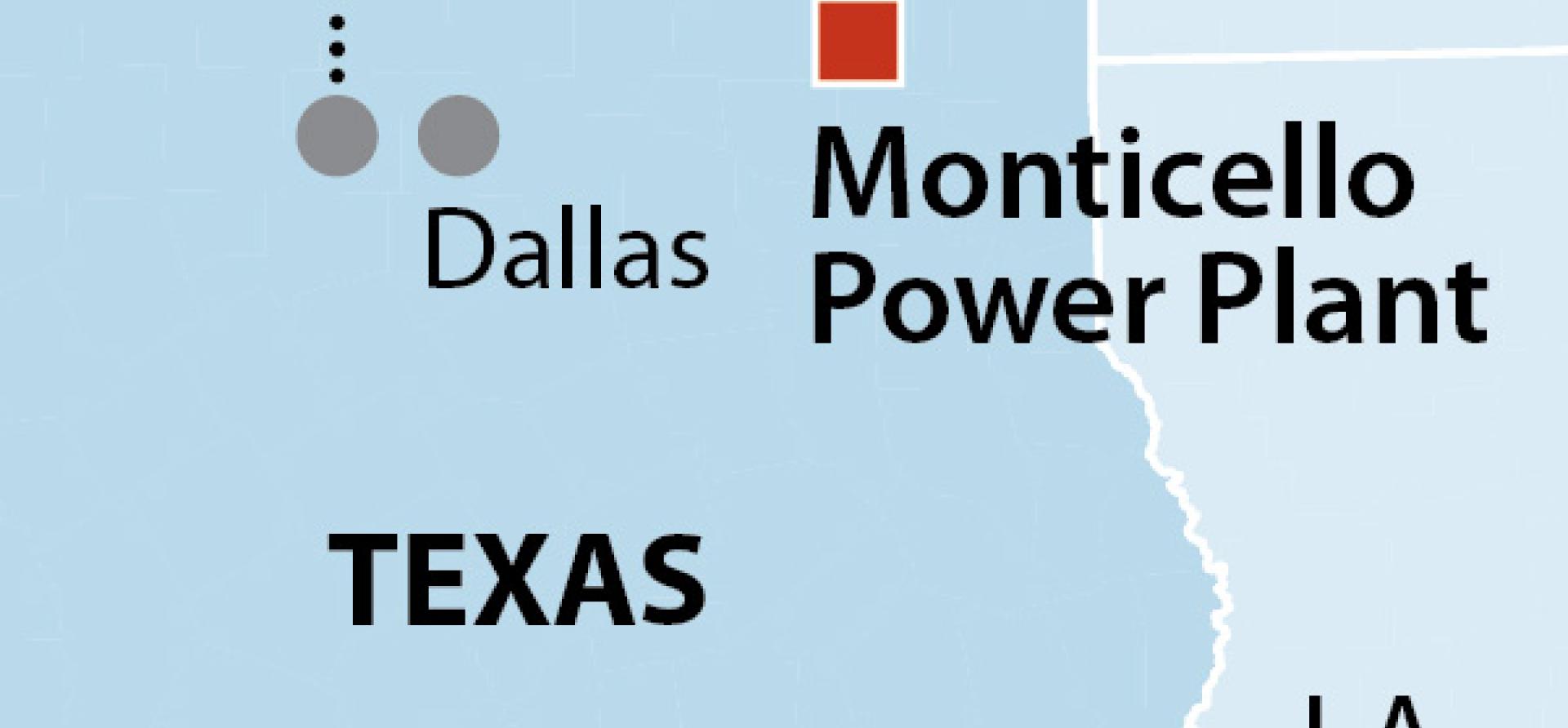IEEFA Texas: Latest U.S. Coal Plant Shutdown Stems From a Saga in Which Investors Failed to See Change Coming

[First of two parts.]
Last week Luminant and its new parent company, Vistra, announced the imminent closure of the 1,800-megawatts Monticello Power Plant in North Texas, near the Arkansas and Oklahoma state lines.
It’s been a long time coming.
The plant has operated at a loss for years, having failed to compete with low natural gas prices and growing renewable energy capacity. We detailed Monticello’s problems in a report we published last year that found six other Texas coal-fired plants at similar risk (“The Beginning of the End: Fundamental Changes in Energy Markets Are Undermining the Financial Viability of Coal-Fired Power Plants in Texas”).
When the plant was first brought to our attention by Texas public-policy activists at Public Citizen and Sierra Club in 2010, it was already the object of controversy. We were asked at the time to look at the financing and corporate arrangements that were keeping it alive, and could see then that the plant was unprofitable, mismanaged, outmoded, and, in truth, worthless.
Two of the largest investors in the then-parent company Energy Future Holdings (EFH)—KKR and TPG Capital—were debating whether the investment had lost 60 percent or 80 percent of its value in the three years since they had bought EFH. The private equity purchase of EFH, which went bankrupt in 2014, was the biggest leveraged buyout in U.S. history, and it was predicated on natural gas prices rising dramatically (Monticello is now part of the holdings of Luminant, recently acquired by Vistra).
But gas prices were not rising—they were dropping—to the detriment of plants in EFH’s portfolio, which were further hobbled by the fact that they could not simultaneously carry high debt and take on new pollution-control investments.
Wall Street has messed up the capital structure of many a company, and when it has done so it has not meant underlying operations are unprofitable as standalone operations. But in this case they were. Natural-gas markets continued to be uncooperative, threatening the financial viability of every coal plant in Texas, many of which had to channel every dollar they could into pay debt service. Dysfunctional coal-plant operations were being used to support a dysfunctional corporate capital structure.
In 2013, Texas debated whether to introduce a “capacity market” to prop up coal-fired plants. Additional payments to Texas coal-plant operators would have been the result of such a policy response, which is what U.S. Energy Secretary Rick Perry (Governor of Texas at the time) is now advocating as national policy. The capacity payments system idea was wisely scrapped in Texas in favor of free market principals of grid management.
Also during this time, in hopes of cuttings costs, EFH bashed environmental protections and the organizations that advocated for them alongside a regulatory process that was no longer seen as in its best interests. This was even though EFH had gotten a huge break from the Texas Railroad Commission on its reclamation-bond responsibilities. The resulting kerfuffle resulted in EFH having to pony up $1 billion out of its debtor-in-possession loans secured in the wake of its bankruptcy.
The company’s bailout forays by way of its capacity market gambit, its challenges to regulation, and its bond-reclamation deal were all meant to mask an unsustainable bad-debt deal whose orchestrators failed to see what was coming vis a vis a broad shift in U.S. electricity-generation markets.
EFH got in trouble because it was using over 60 percent of every revenue dollar to pay interest and because it used financial gimmicks and tricks from at least 2007 through its bankruptcy filing seven years later to stay afloat in the face stepped-up competition from natural gas and renewables.
TEXAS HAD A DIFFERENT ELECTRICITY-GENERATION IDEA, in wind power, an industry that was gaining strength and adding zero-fuel-cost assets to the dispatch portfolio of ERCOT, the agency that manages most of the Lone Star State’s grid. This put Monticello and plants like it at even more risk than natural gas alone presented, and the trend persists.
We assume Vistra will look hard now at other money-losing coal plants in its portfolio, most notably perhaps Big Brown Power Plant and Martin Lake Power Plant, two other legacy assets that are have been in financial distress for some time and show no signs of improvement.
Under new ownership with a rational financial and operational plan, Monticello’s fate was sealed.
Vistra, not incidentally, has recently made a new acquisition in West Texas solar energy.
[Tomorrow: How the closure of the Monticello Power Plant threatens Peabody Energy’s recovery from bankruptcy.]
Tom Sanzillo is IEEFA’s director of finance. David Schlissel is IEEFA’s director of resource planning analysis.
RELATED POSTS:
IEEFA Texas: The Beginning of the End for Coal-Fired Electricity Across One of the Biggest Power Markets in the U.S.
IEEFA Update: In Campaign to Prop Up Navajo Generating Station, Peabody Energy Seeks a Victory Again at Somebody Else’s Expense
IEEFA Report: Winners and Losers Among Big Utilities as Renewables Disrupt Markets Across Asia, Europe, the U.S., and Africa













